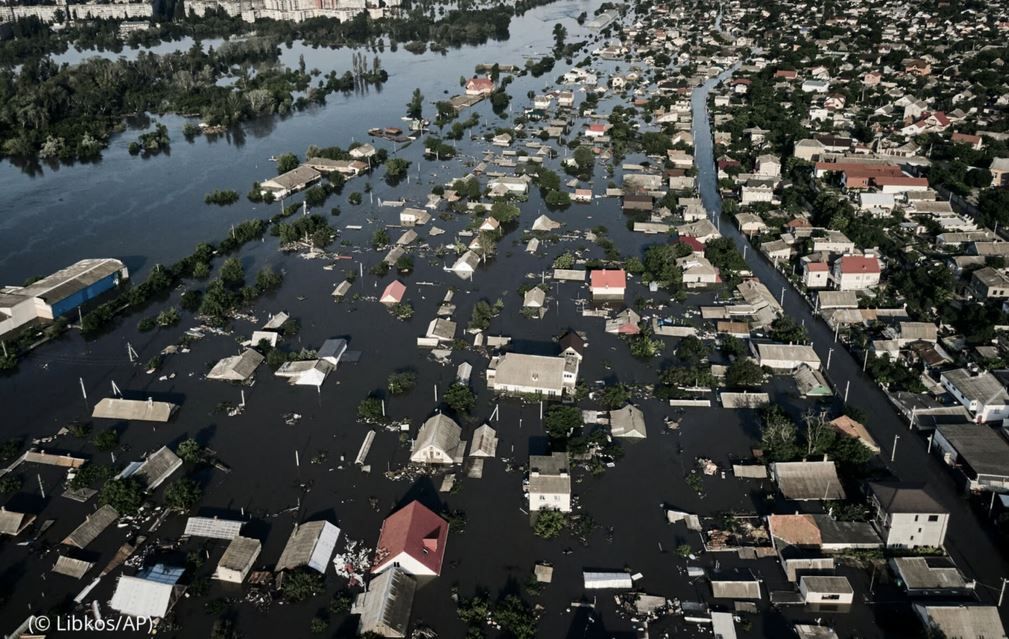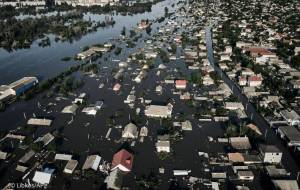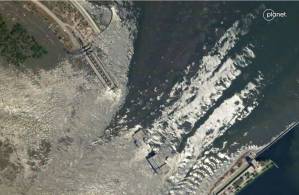By many, it is considered ecocide. Eighty settlements were affected by the floods, at least 62 people were killed in the first days, but reliable numbers from occupied territories are not available. It is more likely that several hundreds of people fell victim to the floods. In a statement from October 2023, the Ukrainian government together with the United Nations estimated the total costs at US$ 14 billion.
The dam breach affected five administrative oblasts of Ukraine, namely Dnipropetrovsk, Zaporizhzhia, Kherson, Mykolaiv and Odesa oblasts. At it’s maximum, around 620km2 were flooded2. That is double the size of the city of Munich. Most of the flood passed through the Dnipro river where it caused losses of habitats, plant communities and species by simply washing them away or by depositing debris2. This sediment also poses a continuing environmental risk, as it contains chemicals, heavy metals and also landmines, ammunition and other war materials. Several high-risk facilities, like storages for agricultural fertilizers were destroyed, polluting nature and with it also the ground water of the remaining citizens. At least 150 tons of machine oil were released into the Dnipro river3. The total amount of disaster waste is estimated to reach at least two million m3.
But not only the resulting flood caused destruction and misery. The desiccation of thousands of square kilometers of wetlands and reservoirs upstream of the dam led to unimaginable damage of these unique habitats. An example is the Velykyi Luh National Nature Park with its nature that is dependent on water conditions. It is unlikely that these ecosystems can recover.
At the moment of writing, it is not possible estimate the full extent of destruction, also because data from occupied territories are lacking. But one thing is clear: This ecocide will affect not only people living in Ukraine today, but also future generations.
This is part 2 of an ongoing series.
1. Riley Bailey GM, Kateryna Stepanenko, Mason Clark. ISW - Russian Operations Assessment June 17, 2023. In: 2023.
2. United Nations Environment Programme (2023). Rapid Environmental Assessment of Kakhovka Dam Breach; Ukraine, 2023. Nairobi, Kenya. In: 2023
3. Tsurkan K. President's Office: At least 150 tons of machine oil released into Dnipro River after Kakhovka dam explosion. In: 2023.


















